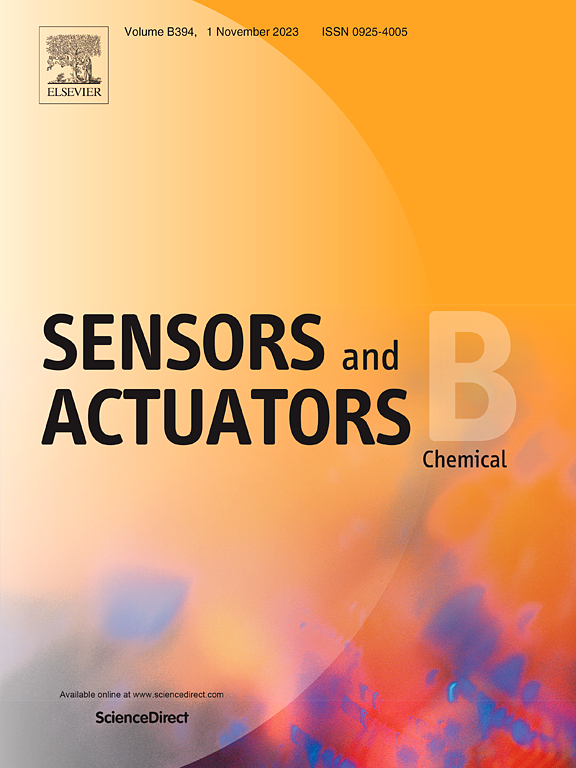Ultrasensitive, online detection of endogenous H2S by a novel ratiometric fluorescent approach
IF 8
1区 化学
Q1 CHEMISTRY, ANALYTICAL
引用次数: 0
Abstract
Endogenous hydrogen sulfide (H2S) is a crucial biological signaling molecule in the mammals. Numerous H2S sensing methods have been developed, yet there remains an urgent need for portable, online and sensitive detection of H2S in complex samples. Herein, a ratiometric fluorescent optical fiber sensor was designed for ultrasensitive, online detection of H2S, using nanohybrids electrostatically self-assembled from silicon quantum dots and gold nanoclusters (AuNCs@SiQDs nanohybrids). The nanohybrids, acting as a ratiometric fluorescent probe, exhibited a specific response to H2S. The mechanism involved static quenching effect of H2S on AuNCs and fluorescence resonance energy transfer between SiQDs and AuNCs. The sensor showed a good linear response to H2S concentration of 0.01 ∼ 100 μM, with an ultralow detection limit of 4.33 nM. The sensor was also successfully employed for rapid detection of H2S in real serum samples, without tedious preprocessing. This approach offers a portable and efficient technique for on-line ultrasensitive measurement of H2S in complex biological samples, as well as the determination of H2S-mediated biomolecules. This method boasts high sensitivity and selectivity, strong anti-interference capability, portability, practicality, and ease of production, making it significant for disease research and emergency analysis.

一种新型比例荧光法超灵敏在线检测内源性H2S
内源性硫化氢(H2S)是哺乳动物体内重要的生物信号分子。虽然已经开发了许多H2S检测方法,但仍然迫切需要便携式,在线和灵敏的检测复杂样品中的H2S。本文利用硅量子点和金纳米团簇静电自组装的纳米杂化体(AuNCs@SiQDs nanohybrids),设计了一种用于超灵敏在线检测H2S的比例荧光光纤传感器。作为比例荧光探针的纳米杂交种对H2S表现出特异性响应。其机制涉及H2S对AuNCs的静态猝灭作用以及SiQDs与AuNCs之间的荧光共振能量转移。该传感器对浓度为0.01 ~ 100 μM的H2S具有良好的线性响应,超低检出限为4.33 nM。该传感器还成功地用于快速检测真实血清样品中的H2S,而无需繁琐的预处理。该方法为复杂生物样品中H2S的在线超灵敏测量以及H2S介导的生物分子的测定提供了一种便携高效的技术。该方法具有灵敏度和选择性高、抗干扰能力强、便携、实用、易于制作等特点,对疾病研究和应急分析具有重要意义。
本文章由计算机程序翻译,如有差异,请以英文原文为准。
求助全文
约1分钟内获得全文
求助全文
来源期刊

Sensors and Actuators B: Chemical
工程技术-电化学
CiteScore
14.60
自引率
11.90%
发文量
1776
审稿时长
3.2 months
期刊介绍:
Sensors & Actuators, B: Chemical is an international journal focused on the research and development of chemical transducers. It covers chemical sensors and biosensors, chemical actuators, and analytical microsystems. The journal is interdisciplinary, aiming to publish original works showcasing substantial advancements beyond the current state of the art in these fields, with practical applicability to solving meaningful analytical problems. Review articles are accepted by invitation from an Editor of the journal.
 求助内容:
求助内容: 应助结果提醒方式:
应助结果提醒方式:


